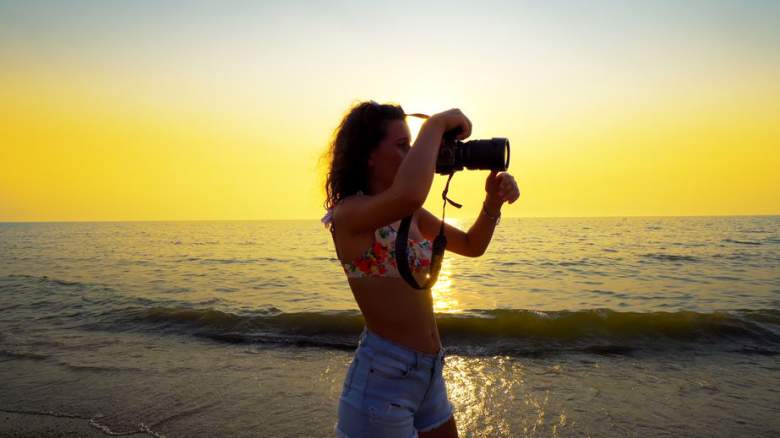
There was a time when powerhouse brands like Canon and Nikon were the undisputed leaders in the camera industry. And while they still make incredible cameras and lenses, Sony has snuck onto the stage as well. And when it comes to mirrorless cameras, Sony is now the brand to beat, with a family of the most impressive, high-performance cameras money can buy. In fact, the best Sony mirrorless cameras are, plain and simple, the best mirrorless cameras.
Sony offers a full range of mirrorless models from cameras for beginner and intermediate photographers to pros who specialize in still imagery and video shooters as well. Sony’s new Alpha A1 has only recently appeared, and it is like a camera from another planet, able to capture 50-megapixel images at continuous shooting speeds of 30fps, shoot 8K video, and more — including autofocus with eye tracking for birds. That’s pretty impressive, and leads our list of the best Sony cameras. But it’s not right for everyone (and in fact is the right camera for a very small number of pros) so this list includes a handful of other amazing Sony mirrorless cameras as well. Whether you’re just starting out, looking for the right camera to step up to, or are a pro who needs the world’s best camera, there is something here for you.
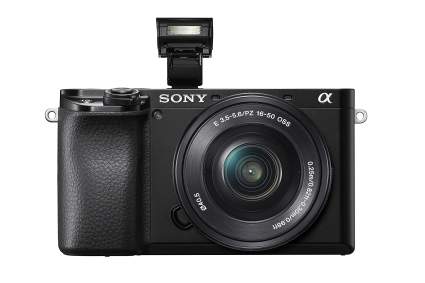
|
Amazon Customer Reviews
|
Price: $894.95 Shop at Amazon | Shop now Read our review |
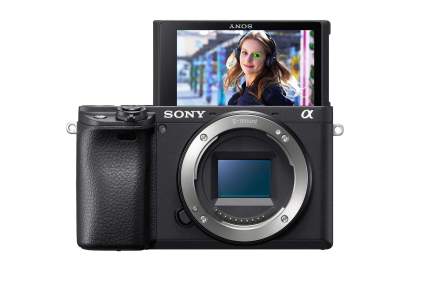
|
Amazon Customer Reviews
|
Price: $898.00 Shop at Amazon | Shop now Read our review |

|
Amazon Customer Reviews
|
Price: $1,798.00 Shop at Amazon | Shop now Read our review |
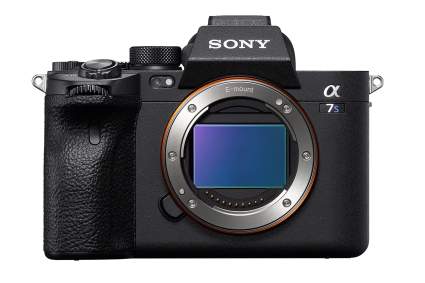
|
Amazon Customer Reviews
|
Price: $3,498.00 Shop at Amazon | Shop now Read our review |

|
Amazon Customer Reviews
|
Price: $2,699.00 Shop at Amazon | Shop now Read our review |
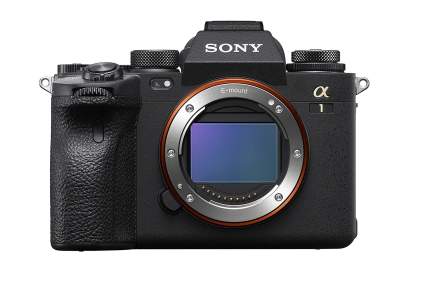
|
Amazon Customer Reviews
|
Price: $5,498.00 Shop at Amazon | Shop now Read our review |
-
1. Sony a6100 Mirrorless Camera
Pros:- Excellent autofocus
- Great human and eye tracking
- 4K video recording
Cons:- No in-body image stabilization
- Low resolution viewfinder
- Limited battery life
Sensor size: APS-C | Viewscreen: 3-inch (articulating touchscreen) | Shooting speed: 11fps | Resolution: 24.2 megapixels | Video resolution: 4K
While not ludicrously expensive, you’ll pay a respectable amount for the Sony a6100, Sony’s entry-level compact mirrorless camera. By compact, I mean it features the smaller APS-C image sensor, though it’s obviously a full-fledged interchangeable lens mirrorless camera. In fact, this iteration of the camera comes with a great 16-50mm zoom lens, though you can find body-only packages if you prefer.
This camera is a superb pick for both beginner and intermediate photographers. Vloggers will appreciate the 180-degree articulating display, and it’s a touchscreen as well, which makes it easy to set focus points and control the camera settings. You get a maximum of 11 frames per second in continuous shooting mode and can capture full 4K video as well. You don’t get in-body image stabilization — one of the tradeoffs of an entry-level body — but the autofocus is fast and effective and locks onto both human and animal eyes, which is a super-useful feature. It also all the connectivity you should ever need — including Wi-Fi, NFX and QR.
Find more Sony a6100 Mirrorless Camera information and reviews here.
-
2. Sony a6400 Mirrorless Camera
Pros:- Fast autofocus
- Built-in flash can be bounced off ceiling
- 4K video recording
Cons:- No in-body image stabilization
- Limited battery life
- no seperate audio port for video recording
Sensor size: APS-C | Viewscreen: 3-inch (articulating touchscreen) | Shooting speed: 11fps | Resolution: 24.2 megapixels | Video resolution: 4K
If compact cameras are too limiting, then the more advanced Sony a6400 may be for you — it’s the APS-C camera that Sony would like to steer intermediate shooters towards. This camera is quite similar, though to the a6100, also on this list. It has many of the same features and capabilities, such as fast and accurate autofocus, a snappy 11 frame per second continuous shooting mode, and 4K video recording. A much sharper electronic viewfinder distinguishes the a6400, though.
The a6400 is somewhat weatherproofed, meaning you can use it in intimate conditions, but it’s probably not a good idea to use it in a tearing rainstorm. It’s also missing in-body image stabilization, though the 3-inch touchscreen tilting display means you can frame your shot on either side of the lens and use it as a vlogging camera if you’re so inclined.
Find more Sony a6400 Mirrorless Camera information and reviews here.
-
3. Sony a7 III Full-Frame Mirrorless Camera
Pros:- 5-axis image stabilization
- 10 fps with eye tracking
- 4K video recording
Cons:- 4K video on at 30fps
- No external battery charger
- Writing to dual card slots can be slow
Sensor size: Full frame | Viewscreen: 3-inch (articulating touchscreen) | Shooting speed: 10fps | Resolution: 24.2 megapixels | Video resolution: 4K
While the Sony a7 III might look expensive to someone coming from APS-C and compact cameras, this camera’s price tag is reasonable enough that it can serve as a great entry-level full-frame camera. Indeed, it’s a great value, delivering almost every meaningful feature and capability you might want in a full-frame model. The 24-megapixel sensor is backed with 5-axis in-body stabilization, and the 696-point autofocus system is lightning fast and super accurate. It also has eye tracking — both human and animal.
The camera isn’t perfect, of course. you get 4K video recording, but only at 30 frames per second, for example. It has dual memory card slots, but writing to both cards can be slow. And there’s no integrated flash, which means you can’t use the camera to drive slave flashes without adding yet another flash to the camera. But those are small quibbles, for the most part, compared to the great handling, awesome image quality and solid array of Sony lenses to choose from.
Find more Sony a7 III Mirrorless Camera information and reviews here.
-
4. Sony a7S III Full-frame Mirrorless Camera
Pros:- Optimized for 4K video at 60fps
- Incredible ISO range
- Excellent battery life
Cons:- Sacrifices still image resolution
- Expensive (unless you're a video pro)
- Sony has not yet embraced 8K
Sensor size: Full frame | Viewscreen: 3-inch (articulating touchscreen) | Shooting speed: 10fps | Resolution: 12 megapixels | Video resolution: 4K
Sony’s a7S III is a purpose-built camera; while many models are generalists, able to shoot stills and video but not amazing at either, this camera is built from the ground up for shooting just about the best 4K video you can capture today. As the name suggests, this is the third iteration of the a7, and Sony has been incrementally improving the camera for years now.
The 12-megapixel sensor is the ideal size to capture 4K video without interpolation or cropping, and it’s possible to record continuously for an hour without the camera showing any signs of heat exhaustion. You get a 3-inch touchsreen that flips out to the side for framing the shot from any angle, including in front of the lens. The camera has an incredible ISO range from as low as 80 all the way to 409,600. And of course it’ll capture great still photography as well, with Sony’s superb 759-point autofocus and 10 frames per second in continuous shooting mode.
Find more Sony a7S III Mirrorless Camera information and reviews here.
-
5. Sony a7R IV Full-frame Mirrorless Camera
Pros:- Gargantuan 60-megapixel stills
- Real-time eye tracking
- Excellent batytery performance
Cons:- Not well suited to video
- Files sizes are equally gargantuan
- Pixel Shift mode can be flakey
Sensor size: Full frame | Viewscreen: 3-inch (articulating touchscreen) | Shooting speed: 10fps | Resolution: 12 megapixels | Video resolution: 4K
The “R” in the Sony a7R IV stands for resolution, and let’s get right to the camera’s signature feature: It is built around a massive 61-megapixel sensor. One of the most impressive mirrorless cameras around, full-frame or otherwise, the a7R IV is for the pro who needs every pixel possible — 9504 x 6336 of them, in fact. But there’s a lot more under the hood than a lot of pixels. Sony reuses the a7’s superb 5-axis image stabilization in the body, along with 10fps continuous shooting and outstanding autofocus and subject-tracking capability (including human and animal eye tracking).
Sony also builds the camera about its Z-series battery. You get between 500 and 670 shots on a charge depending on whether you’re using the electronic viewfinder or the LCD display. And you can shoot about three hours of video on a charge as well. It’s a superb camera, but for the purpose for which it’s built. The super-high-res sensor is not ideal for shooting video, for example, so if video is a priority, you are well-advised to look elsewhere.
Find more Sony a7R IV Mirrorless Camera information and reviews here.
-
6. Sony a1 Full-frame Mirrorless Camera
Pros:- 50.1-megapixel resolution
- 8K video recording
- 30fps continuous shooting
Cons:- Expensive
- Video recording limited by heating
- Jack-of-all-trades camera is overkill for many photographers
Sensor size: Full frame | Viewscreen: 3-inch (articulating touchscreen) | Shooting speed: 30fps | Resolution: 50.1 megapixels | Video resolution: 8K
The newest addition to the Sony stable, the Sony a1 is the flagship of the Sony line and intended for pros who need to shoot ultra-high-resolution stills while also capturing broadcast quality (and beyond) video. It features a 50.1-megapixel sensor which, while not quite equalling the Sony a7R IV, benefits from the new Exmoor RS image sensor and can capture 30 frames per second without slowing down and without any blackouts.
And this camera is equally adept at video. It can shoot 8K video or you can dial down and get 4K video at 120fps. Unlike the Sony a7S III, though, expect this camera to overheat — you can only shoot about 30 continuous minutes of video in 8K or 4K. The camera has dual UHS-II SD card slots so you can write to both cards at once without slowdowns.
You might be familiar with Sony’s superb 759-point phase detection autofocus and eye tracking for both humans and animals; the a1 extends that capability with tracking for bird eyes, a welcome feature for bird photographers.
Should you get a DSLR or a Mirrorless Camera?
A DSLR -- Digital Single Lens Reflex camera -- has a long history as a camera preferred by pros and enthusiasts alike. It gets its name from the mechanism -- either a pentaprism or pentamirror -- that diverts light from the lens up through the optical viewfinder -- you're seeing the same image the sensor will eventually see when you press the shutter release. And when the shutter is repressed, a mirror mechanism flips out of the way and lets the sensor be exposed to the light through the lens.
That worked great for half a century, but mirrorless cameras are just what they sound like -- it's now possible to use an LCD display and electronic viewfinder to show exactly what the sensor sees without the need for any mechanical pentaprism to flip out of the way.
Even though I heartily recommend DSLRs, make no mistake: someday, mirrorless cameras will be good enough to replace DSLRs, and DSLRs will be as obsolete as the Kodal Instamatic. But for the time being, and for quite a few years to come, DSLRs are still a better buy for a lot of photographers:
DSLRs offer better battery life than mirrorless cameras because you're not forced to use the rear monitor or electronic viewfinder.
Manby mirrorless cameras don't yet have as expansive of a lens selection as DSLRs, and there are lenses you simply can't get to solve photographic problems you might have.
- Many mirrorless cameras aren't yet as rugged and durable as their DSLR cousins.
See Also:
11 Best Nikon Cameras Buyer’s Guide